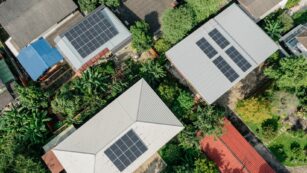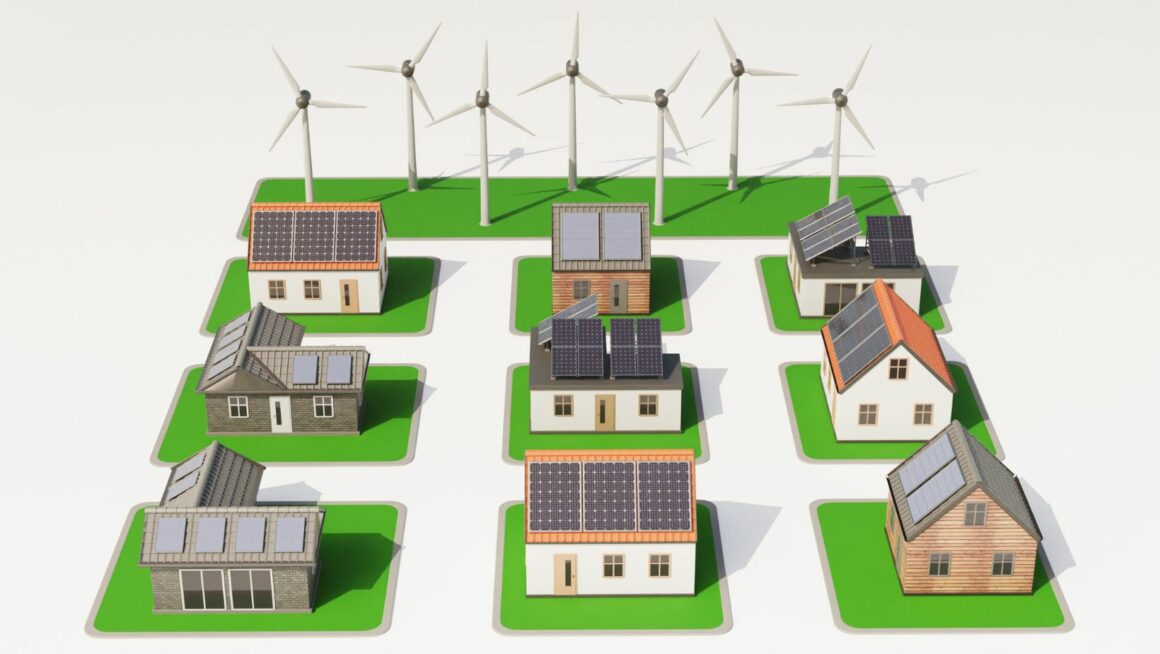Imagine a place where every building is powered by the sun and the wind, where every meal is sourced from local gardens and farms, and where every decision is made with the health of the planet in mind. This isn’t a scene from a futuristic movie; it’s a reality in sustainable villages around the world. These communities are not just surviving; they’re thriving, proving that sustainability can be a blueprint for modern living.
A Sustainable Village
A sustainable village adopts key practices that drastically reduce its environmental impact while promoting a resilient community. These villages utilise renewable energy sources such as solar panels and wind turbines, ensuring they generate minimal carbon emissions. The design and construction of buildings in these communities prioritize eco-friendly materials and energy-efficient technologies.
Components of a Sustainable Village
A sustainable village integrates various systems and technologies to minimize its environmental impact and promote a resilient community. This section explores the core elements that make a village sustainable, emphasizing energy efficiency, waste management, and water conservation.
Energy Efficiency and Renewables
 Sustainable villages prioritize energy efficiency to reduce power consumption and lower carbon footprints. Installation of solar panels and wind turbines harnesses renewable resources, which significantly limits reliance on fossil fuels. Buildings in sustainable villages often feature advanced insulation materials, energy-efficient lighting, and smart appliance choices to further enhance energy savings. These measures ensure that the energy needs are met in the most sustainable manner possible, emphasizing long-term benefits over short-term convenience.
Sustainable villages prioritize energy efficiency to reduce power consumption and lower carbon footprints. Installation of solar panels and wind turbines harnesses renewable resources, which significantly limits reliance on fossil fuels. Buildings in sustainable villages often feature advanced insulation materials, energy-efficient lighting, and smart appliance choices to further enhance energy savings. These measures ensure that the energy needs are met in the most sustainable manner possible, emphasizing long-term benefits over short-term convenience.
Waste Management and Recycling
Effective waste management strategies are indispensable in sustainable villages, focusing on reducing landfill use and maximizing resource reutilization. Communities adopt robust recycling programs that segregate waste to facilitate efficient recycling and reprocessing of materials like plastics, metals, and glass. Composting organic waste becomes a routine practice, turning food scraps and yard waste into nutrient-rich compost used to enhance local agricultural productivity. These initiatives not only reduce waste but also support circular economic practices by turning waste into valuable resources.
Water Conservation Techniques
 Water conservation in sustainable villages involves sophisticated techniques to ensure that water usage is optimized. Rainwater harvesting systems collect and store rainwater for non-potable uses such as irrigation and toilet flushing, significantly reducing the demand for municipal water. Sustainable landscaping practices, including the use of drought-resistant plants and efficient irrigation systems, help in minimizing water waste. Moreover, these villages often employ water-efficient appliances and fixtures that contribute to substantial reductions in water use, demonstrating a commitment to preserving this vital resource for future generations.
Water conservation in sustainable villages involves sophisticated techniques to ensure that water usage is optimized. Rainwater harvesting systems collect and store rainwater for non-potable uses such as irrigation and toilet flushing, significantly reducing the demand for municipal water. Sustainable landscaping practices, including the use of drought-resistant plants and efficient irrigation systems, help in minimizing water waste. Moreover, these villages often employ water-efficient appliances and fixtures that contribute to substantial reductions in water use, demonstrating a commitment to preserving this vital resource for future generations.
Case Studies: Successful Sustainable Villages Around the World
Auroville, India
 Focusing on self-sustenance and ecological harmony, Auroville stands out as a model sustainable village, founded in 1968. The village harnesses solar power, wind energy, and biogas, consistently pushing the bounds of environmental conservation. The community’s effective waste management system involves careful segregation, composting, and recycling, reducing landfill waste significantly. Auroville’s commitment to water conservation is evident in its intricate rainwater harvesting systems and effective use of greywater.
Focusing on self-sustenance and ecological harmony, Auroville stands out as a model sustainable village, founded in 1968. The village harnesses solar power, wind energy, and biogas, consistently pushing the bounds of environmental conservation. The community’s effective waste management system involves careful segregation, composting, and recycling, reducing landfill waste significantly. Auroville’s commitment to water conservation is evident in its intricate rainwater harvesting systems and effective use of greywater.
BedZED, United Kingdom
Beddington Zero Energy Development (BedZED), the UK’s largest carbon-neutral eco-community, showcases advanced approaches in sustainable living since 2002. The village features energy-efficient buildings crafted from low-impact materials, solar panels, and a district-heating biomass cogeneration plant. BedZED’s water saving strategies include low-flow fixtures and a green roofing system. Here, public transport accessibility and minimal car use underscore a lifestyle of reduced carbon footprints.
Freiburg, Germany
 Often celebrated as the “Green City,” Freiburg promotes sustainable living through well-integrated residential projects like Vauban and Rieselfeld. In these districts, homes meet strict low-energy standards, and the city has extensive networks for both cycling and public transportation that minimize vehicular emissions. Freiburg’s impressive waste management program focuses on extensive recycling and reuse of materials, while green spaces are irrigated with treated waste water, reflecting its holistic approach to sustainability.
Often celebrated as the “Green City,” Freiburg promotes sustainable living through well-integrated residential projects like Vauban and Rieselfeld. In these districts, homes meet strict low-energy standards, and the city has extensive networks for both cycling and public transportation that minimize vehicular emissions. Freiburg’s impressive waste management program focuses on extensive recycling and reuse of materials, while green spaces are irrigated with treated waste water, reflecting its holistic approach to sustainability.
ReGen Villages, Netherlands
Pitched as the first “regenerative” eco-village, ReGen Villages in the Netherlands focuses on creating self-reliant communities where technology meets sustainability. Its innovative systems include localized food production, energy-positive homes, closed-loop waste management, and on-site water management. Designed to operate independently from external municipal systems, ReGen Villages exemplifies the integration of digital and ecological technologies to build resilient communities.

